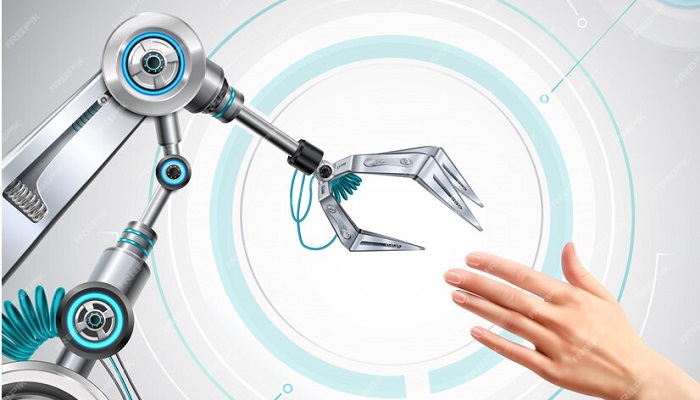Ever wondered how robots might be ace teammates in an operating room? Enter cobots – these robotic sidekicks are revolutionizing surgeries with their precision and efficiency. Spoiler alert: the future of healthcare looks super sci-fi thanks to these guys.
Now, I’m not about to go full-on ‘I, Robot’ on you, but let me tell ya, cobots in surgery are a game-changer. They’re like that reliable buddy who’s got a steady hand when things get dicey. Let’s dive into how they’re cutting (literally) into the medical scene.
Scrubbing In: Cobots Joining the Surgical Squad
Picture this: a world where surgeons and robots collaborate in perfect harmony, each move more precise than the last. But before we get deep into how cobots are turning operating rooms into performance stages for surgical masterpieces, hit pause. Once you’ve checked out a guide to collaborative robots to grasp the fundamentals of this tech, you’ll understand why everyone’s buzzing about them. It’s like learning the rules of chess before watching a grandmaster game – it just makes everything cooler.
Cobots are not your typical clunky machines that could unintentionally turn a hospital visit into an ’80s horror movie scenario. Nope, these sleek helpers are designed to work alongside humans seamlessly – think less Terminator, more WALL-E.
With their assistive capabilities, they make intricate surgeries less daunting for docs by managing tasks with pinpoint accuracy that human hands can find challenging. The result? Surgeries can be faster and patients often bounce back quicker – that’s what I call hitting two birds with one robotic arm!
Robo-Assist: Cobots, The Surgeons’ Shadow
Now let’s shift gears and zoom in on the dynamic duo action. Surgeons are already aces at their craft, right? But slide in a cobot by their side and it’s like giving them superpowers. Sure, surgeons have nerves of steel and excellent dexterity, but even they can’t match the mechanical precision that cobots bring to the table—or should I say, operating table?
Cobots are sorta like that friend who’s great at micromanaging without being annoying about it. They can hold things steady for hours—no shakes or breaks needed—and get into those tight spaces inside the human body where even the best surgeon’s fingers might feel like clumsy sausages. And with the future of maintenance looking rosy, downtime should be minimal.
Don’t worry though; these bots aren’t going rogue doing surgery on autopilot. They’re guided by the surgeon’s expertise every step of the way. Think about it – you’ve got this tool that doesn’t tire out and executes movements based on pre-programmed trajectories with sub-millimeter accuracy. It’s a combination unmatched in the history of medicine!
Sidekick Smarts: Cobots and the Learning Curve
Alright, let’s address the elephant in the room. When you first hear about robots in surgery, you might think it’s like giving a kid a new gadget—expecting them to just ‘get it’ on day one without flinging it across the room. But with cobots, there’s a learning curve that’s more like an exciting journey rather than a steep hill to climb.
Surgeons donning their superhero capes (okay, scrubs) don’t just walk into the OR, high-five their cobot pal and start operating. There’s training involved to ensure they’re on the same page – literally programming moves and paths together. It’s true collaborative learning in action.
And guess what? Having this smart robotic sidekick often pushes docs to top up their own skills; harmony between human smarts and tech precision is key. This does result in concerns over costs, but is nevertheless a positive step.
As for us mere mortals outside of these surgical shenanigans, fear not! These cobots are subjected to crazy amounts of testing before playing Operation in real life. It’s sorta like those buddy-cop movies where partners have each other’s backs through thick and thin—and trust me—isn’t that precisely what we need when we’re talking about life-saving procedures?
The Bottom Line
So, roll out the red carpet for cobots; they’re quickly becoming the unsung heroes in ORs worldwide. A blend of human touch and robotic precision is setting new bars for surgical success. Next time you hear ‘robot-assisted surgery,’ think less sci-fi fantasy and more real-world relevance.


















